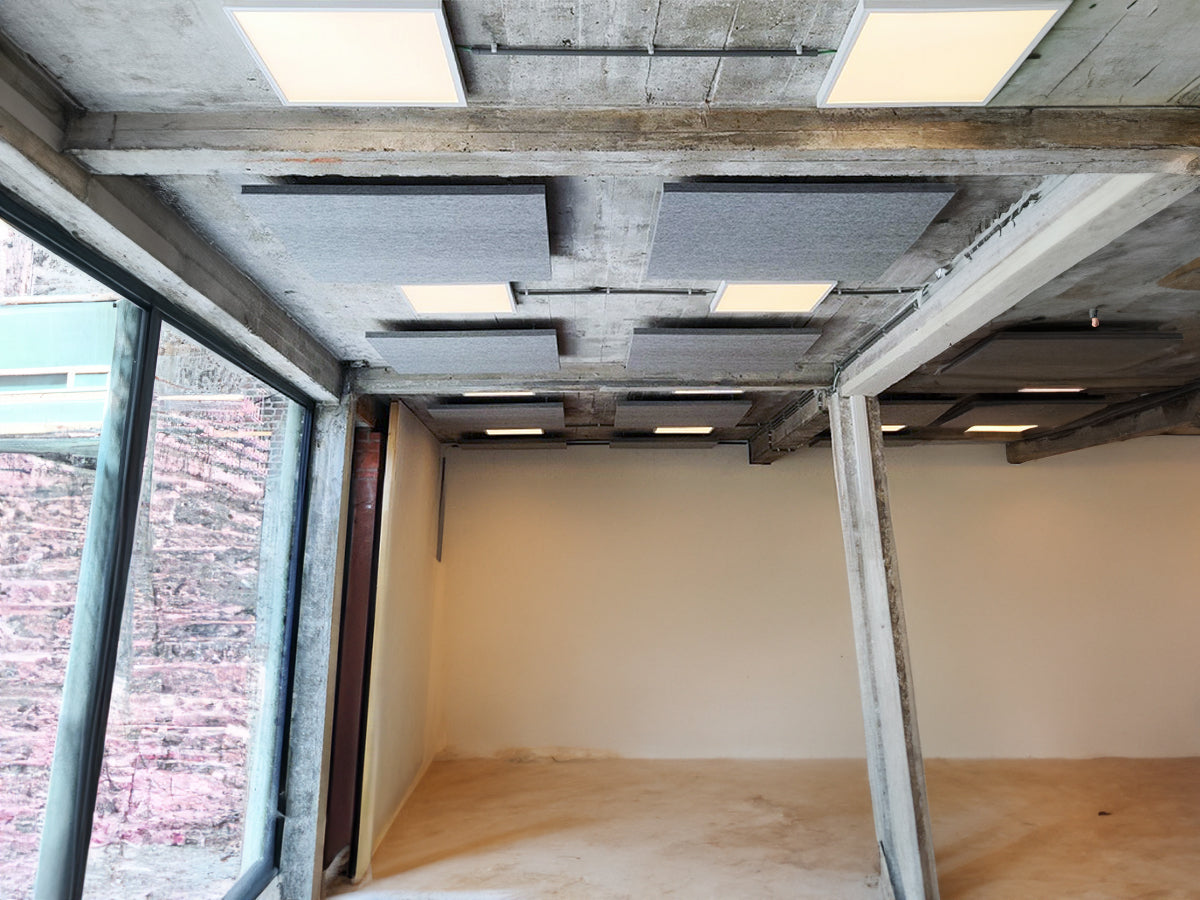What are L’nT,w, Rw and DnT,w + Ctr?
The level of sound insulation that is provided by a product, or complete system, is obviously very important. But unfortunately, the terms used are very scientific, and insist on using superscript and subscript to hide their meanings! But don't worry, here we shall try to explain what they mean in layman's terms - if you want exact scientific definitions of these terms, then Google is your friend!

Airborne Noise
Airborne noise is stopped by putting something in between its source, and where you are. This something is usually some soundproof insulation. To be able to compare the performance of different insulation products we quote the number of decibels difference between the source room and the listening room. So if on one side of the soundproofing insulation is a speaker generating 60dB of noise, and on the other side we can hear it at 40dB, then the difference (performance) of the insulation is 20dB. The bigger the difference, the better the performance of the sound insulation.
There are, just to make things more complicated, a number of different versions of this difference. The same principles apply, it is just that each specifies how we test the sound on either sound of the wall in a slightly different way. There are two parts to look at:
What is the initial letter?
Anything starting with a "D" is a field measurement - that means the difference was measured in a real world situation, and has as a result been subject to the noise leakage you would get in a real house (flanking noise and ambient noise for example.
Anything starting with an "R" is a laboratory measurement. This means it is a more accurate reflection of the insulation performance, but doesn't take into consideration some of the challenges you would get in a real world situation.
Does it have "+ Ctr" after it?
If it doesn't, then this is the straight difference observed by the equipment between each side of the insulation.
If it does, then the difference has been adjusted to account for low frequency noise (for example bass noise) which is much harder to insulate against. This is usually a negative number, reducing the reported performance.
So following on from that explanation, the main four definitions of the sound insulation performance of a material are:
DnT,w - Weighted Standardised Field Level Difference
The difference, in decibels, between the level of noise either side of an object, tested in the field.
DnT,w + Ctr - Weighted Standardised Field Level Difference Adjusted for Control
The difference, in decibels, between the level of noise either side of an object, tested in the field, and adjusted to include how well it stops low frequency noise.
Rw - Weighted Sound Reduction Index
The difference, in decibels, between the level of noise either side of an object, tested in a lab.
Rw + Ctr - Weighted Sound Reduction Index Adjusted for Control
The difference, in decibels, between the level of noise either side of an object, tested in a lab, and adjusted to include how well it stops low frequency noise.
Impact Noise
Impact noise, for example the sound of footsteps in a flat above, is tested by tapping on one side of the wall or ceiling, and measuring on the other. Like airborne noise measurement, the result is given in decibels, but unhelpfully, with impact noise a lower value equals a better performance. Yes, that is crazy, but unfortunately we don't make the rules. So a flooring reporting impact difference of 5db is better performing than another that reports 10db. There are two main indexes, L’ nT,w and Ln,w:
L’nT,w - Weighted Standardised Field Impact Sound Pressure Level
The amount of impact noise transmitted through a material, in field conditions, so includes flanking transmission.
Ln,w - Weighted Normalised Impact Sound Pressure Level
The amount of impact noise transmitted through a material, in lab conditions, so does not include flanking transmission.




